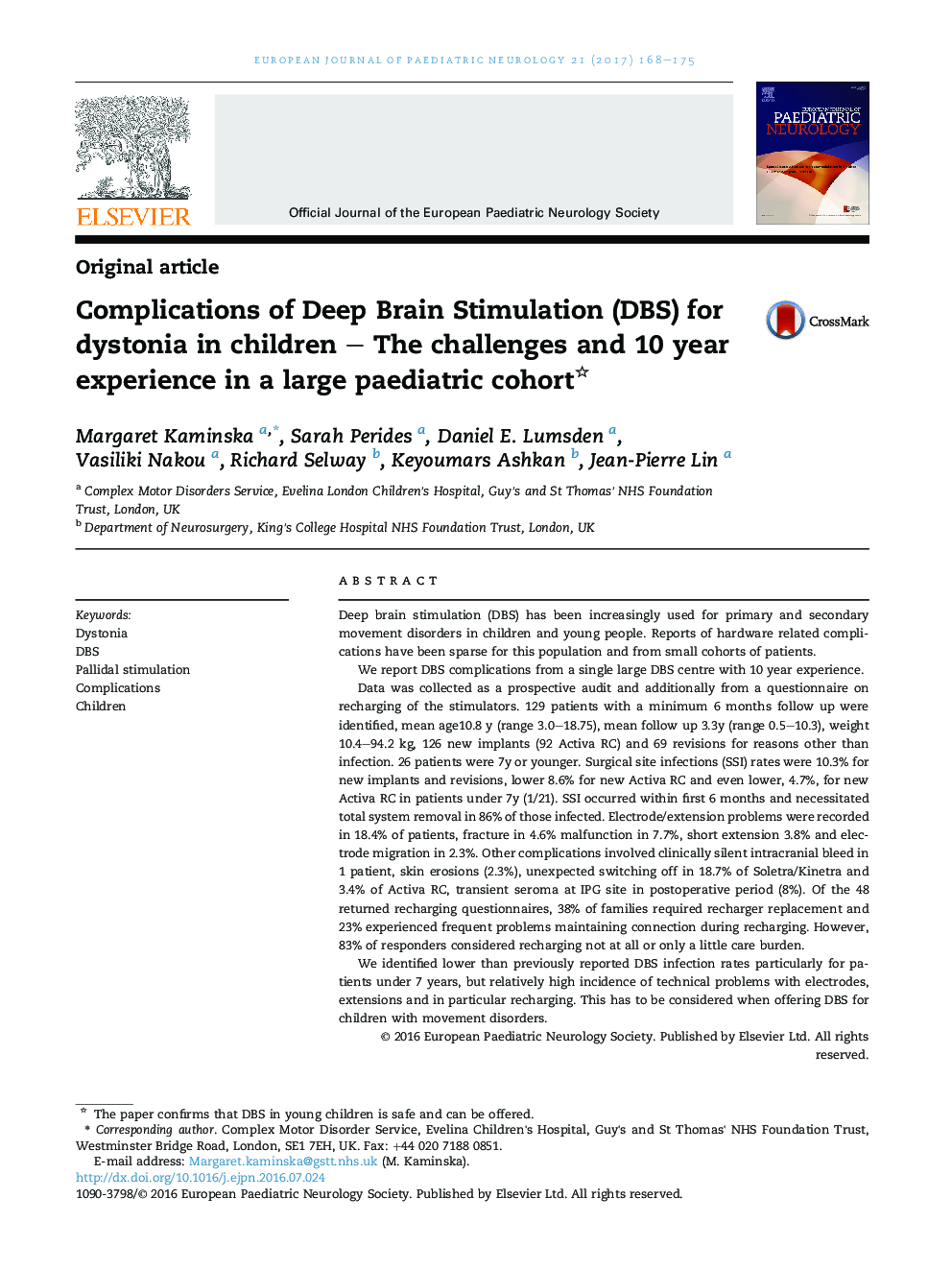| کد مقاله | کد نشریه | سال انتشار | مقاله انگلیسی | نسخه تمام متن |
|---|---|---|---|---|
| 5628927 | 1580002 | 2017 | 8 صفحه PDF | دانلود رایگان |

- Lower than in literature infection rates following DBS for dystonia in children are reported and no increased risk for patients under 7 years.
- We report relatively high incidence of technical problems with electrodes and extensions and in particular recharging.
- Presentation of heterogeneous phenotypes requires an experienced team to manage and prevent complications.
Deep brain stimulation (DBS) has been increasingly used for primary and secondary movement disorders in children and young people. Reports of hardware related complications have been sparse for this population and from small cohorts of patients.We report DBS complications from a single large DBS centre with 10 year experience.Data was collected as a prospective audit and additionally from a questionnaire on recharging of the stimulators. 129 patients with a minimum 6 months follow up were identified, mean age10.8Â y (range 3.0-18.75), mean follow up 3.3y (range 0.5-10.3), weight 10.4-94.2Â kg, 126 new implants (92 Activa RC) and 69 revisions for reasons other than infection. 26 patients were 7y or younger. Surgical site infections (SSI) rates were 10.3% for new implants and revisions, lower 8.6% for new Activa RC and even lower, 4.7%, for new Activa RC in patients under 7y (1/21). SSI occurred within first 6 months and necessitated total system removal in 86% of those infected. Electrode/extension problems were recorded in 18.4% of patients, fracture in 4.6% malfunction in 7.7%, short extension 3.8% and electrode migration in 2.3%. Other complications involved clinically silent intracranial bleed in 1 patient, skin erosions (2.3%), unexpected switching off in 18.7% of Soletra/Kinetra and 3.4% of Activa RC, transient seroma at IPG site in postoperative period (8%). Of the 48 returned recharging questionnaires, 38% of families required recharger replacement and 23% experienced frequent problems maintaining connection during recharging. However, 83% of responders considered recharging not at all or only a little care burden.We identified lower than previously reported DBS infection rates particularly for patients under 7 years, but relatively high incidence of technical problems with electrodes, extensions and in particular recharging. This has to be considered when offering DBS for children with movement disorders.
Journal: European Journal of Paediatric Neurology - Volume 21, Issue 1, January 2017, Pages 168-175